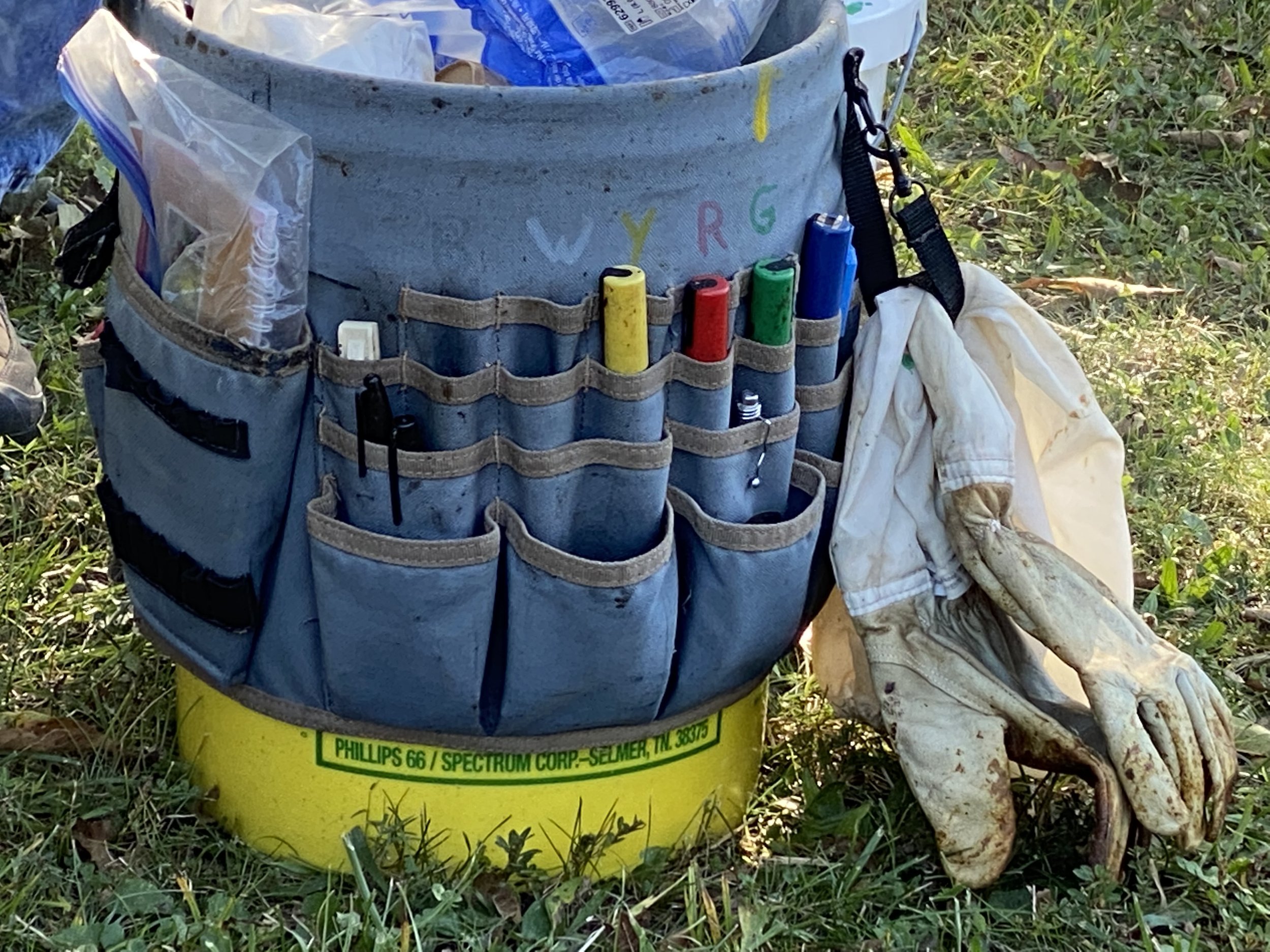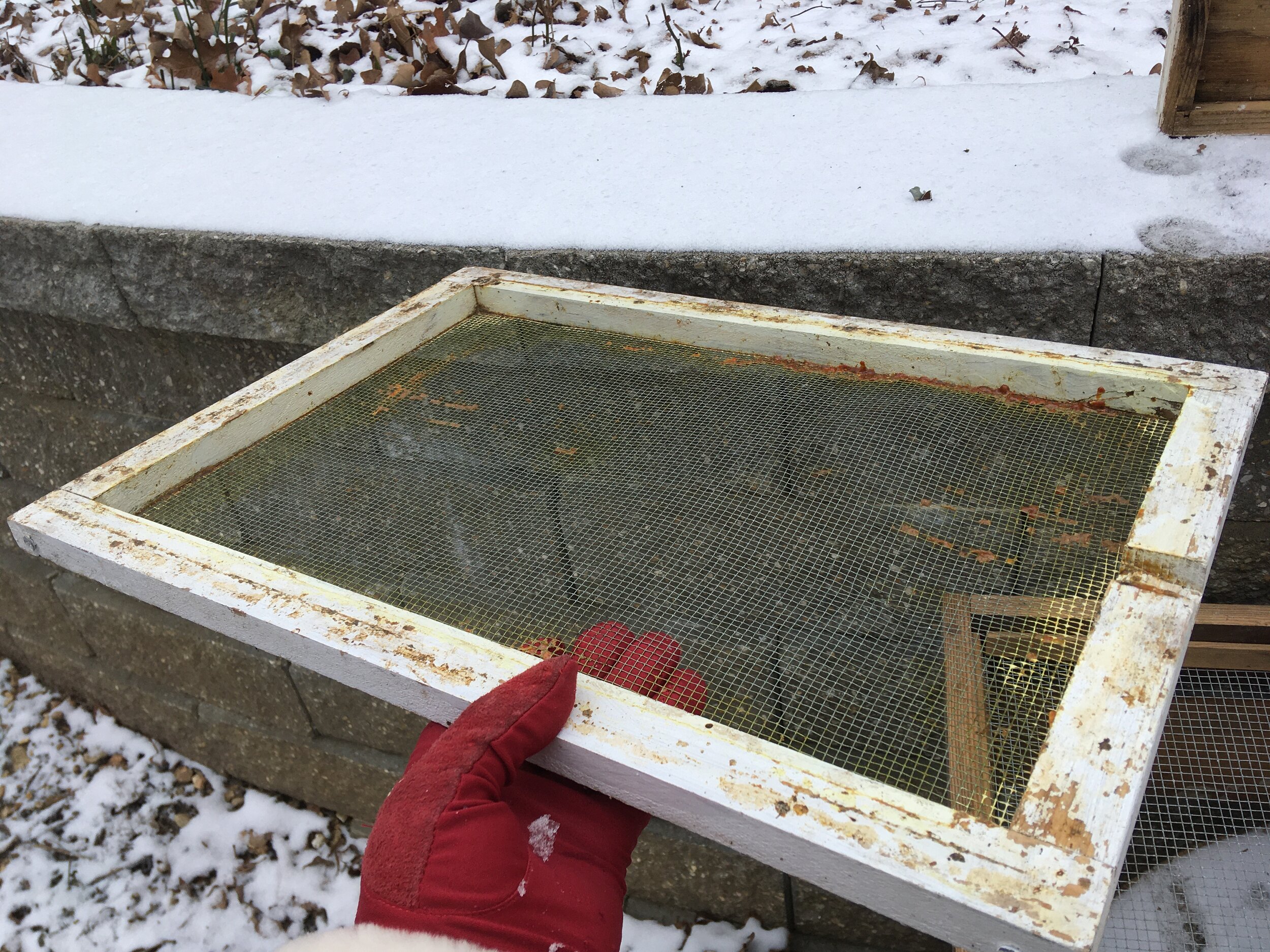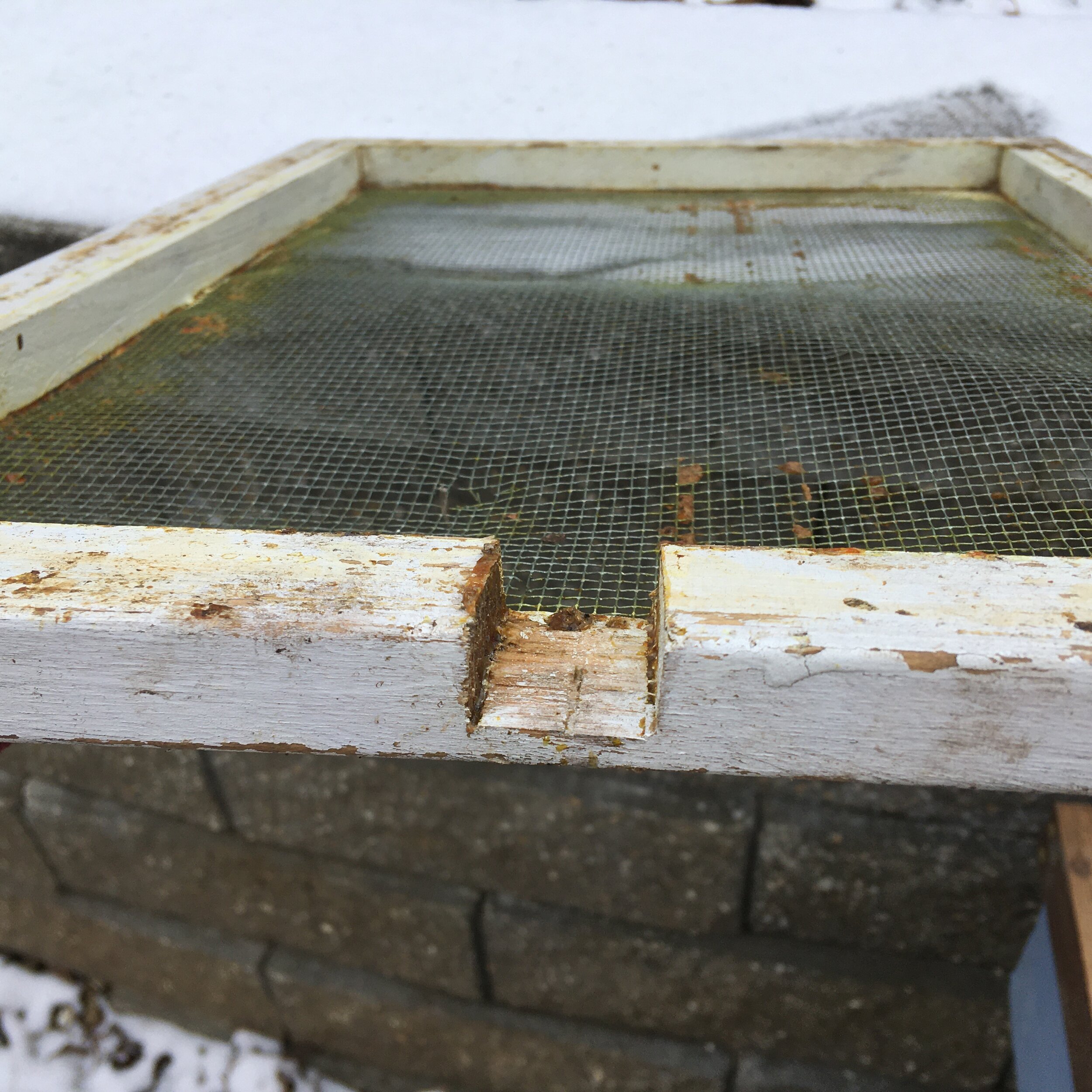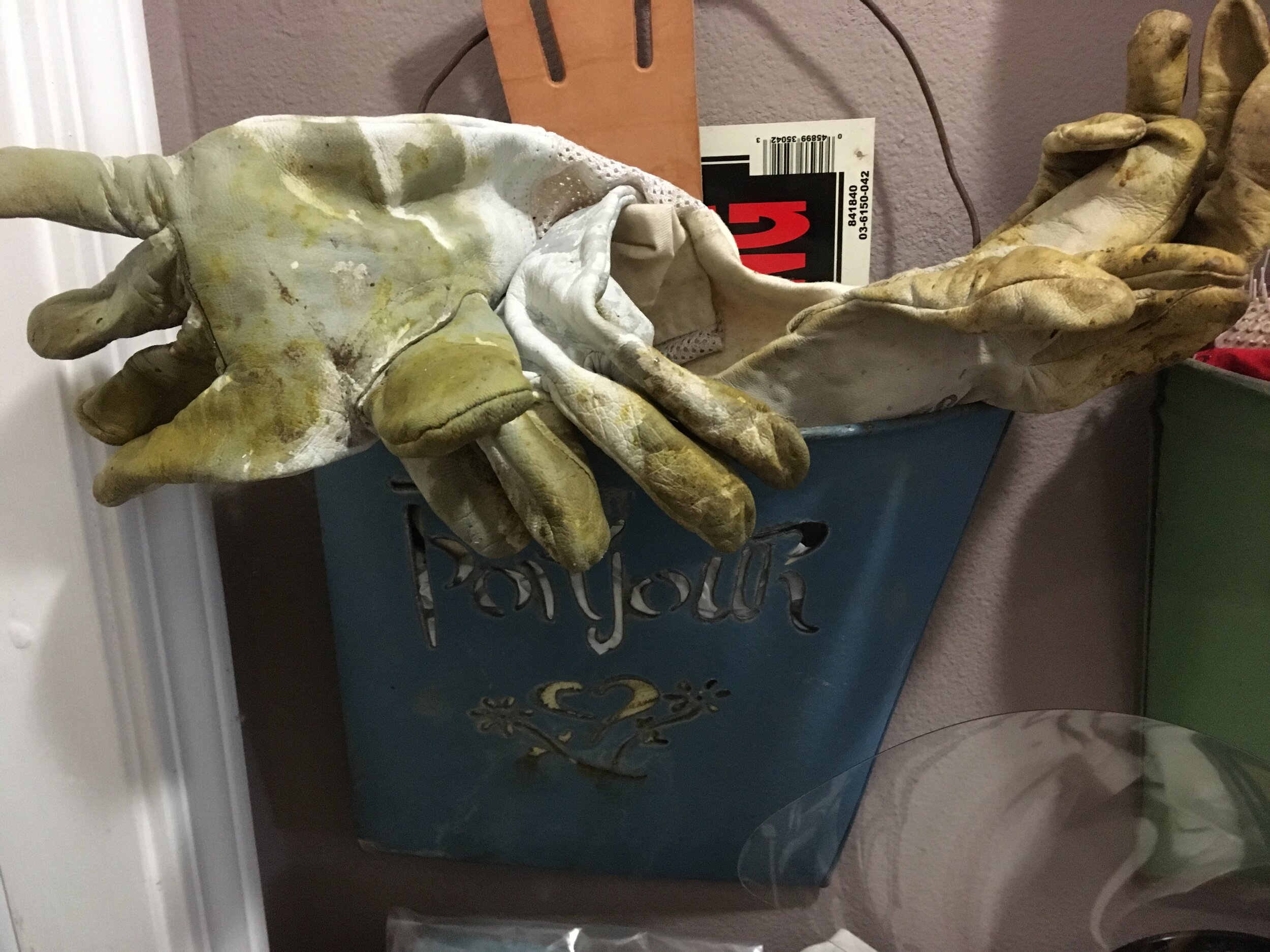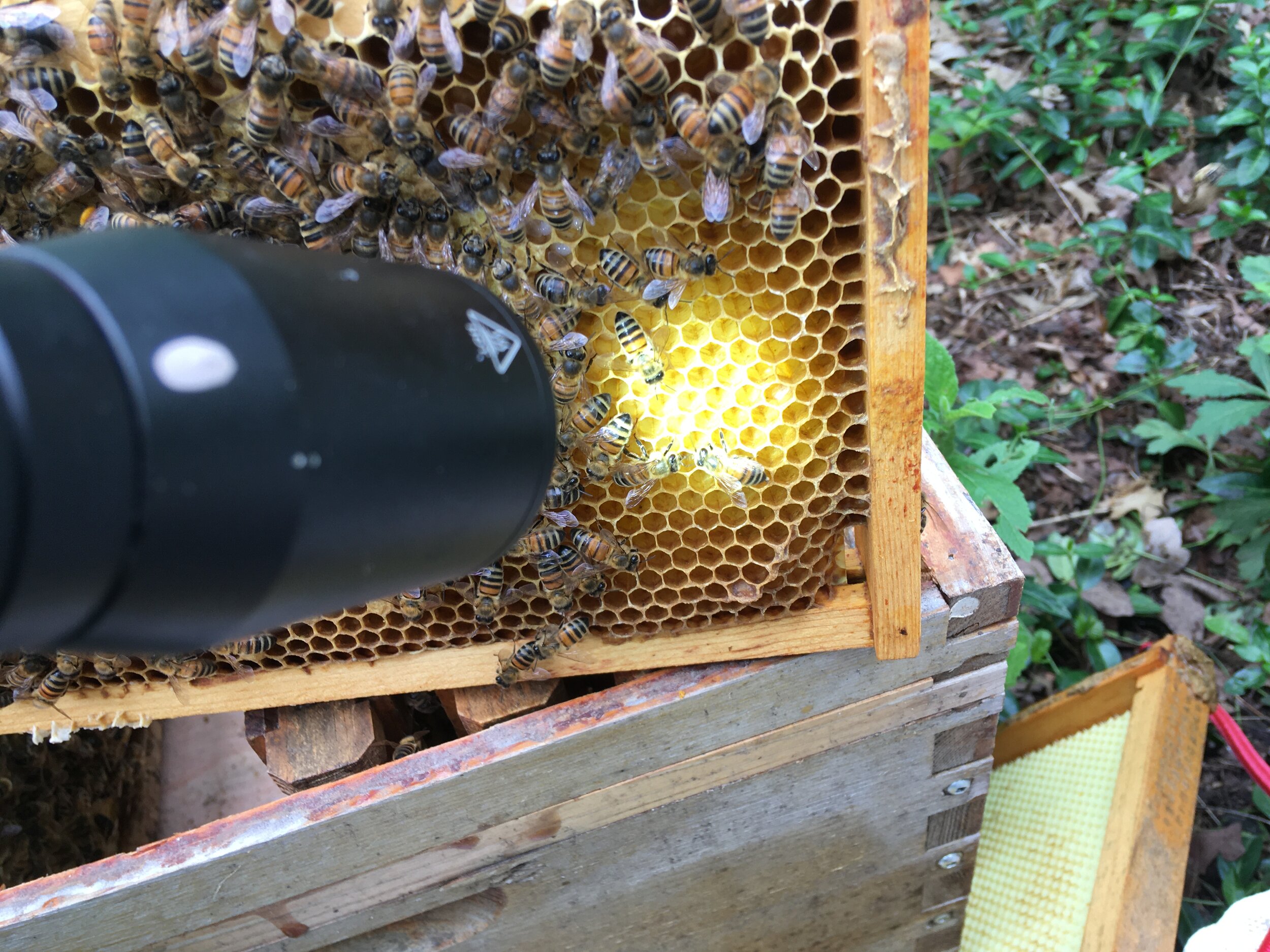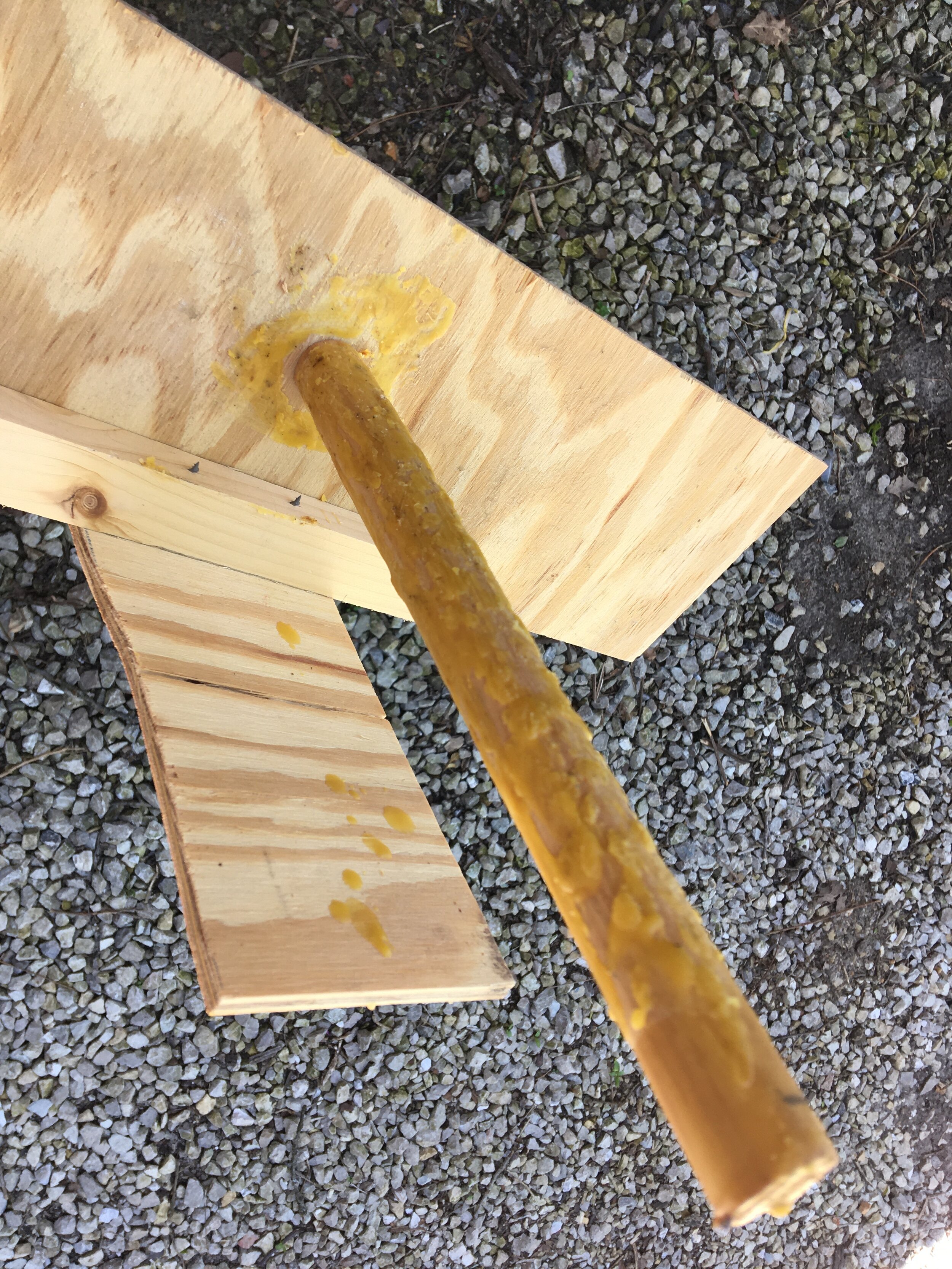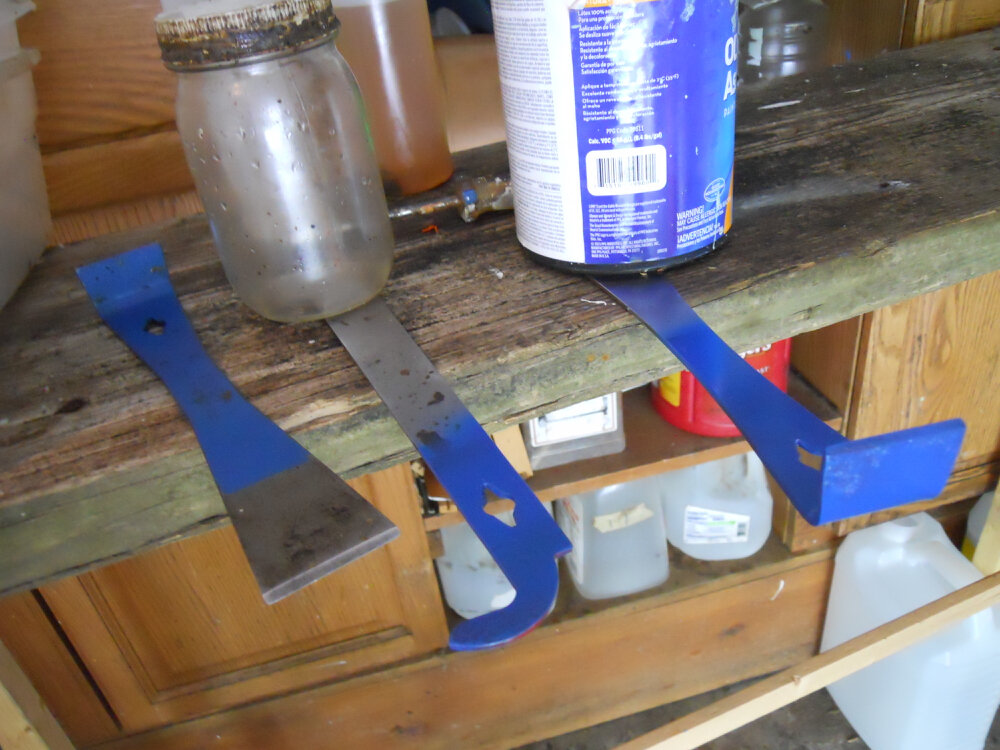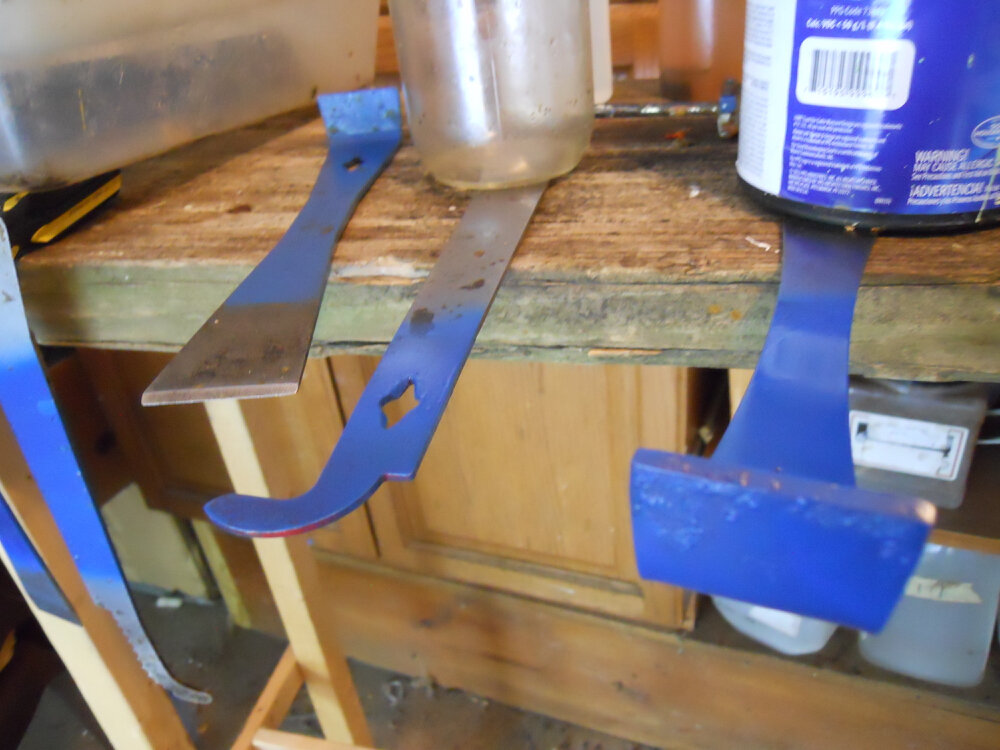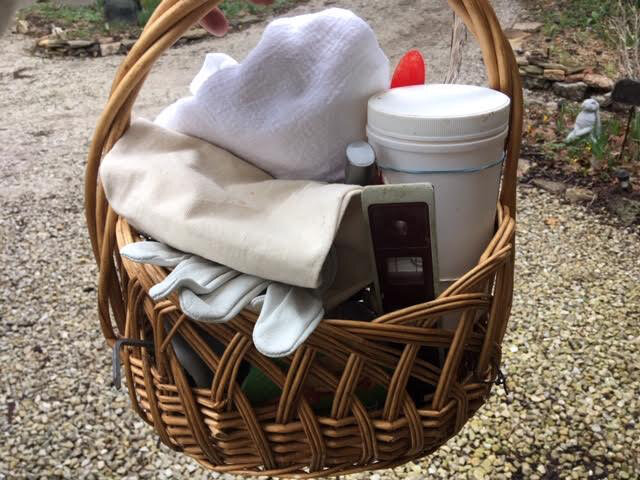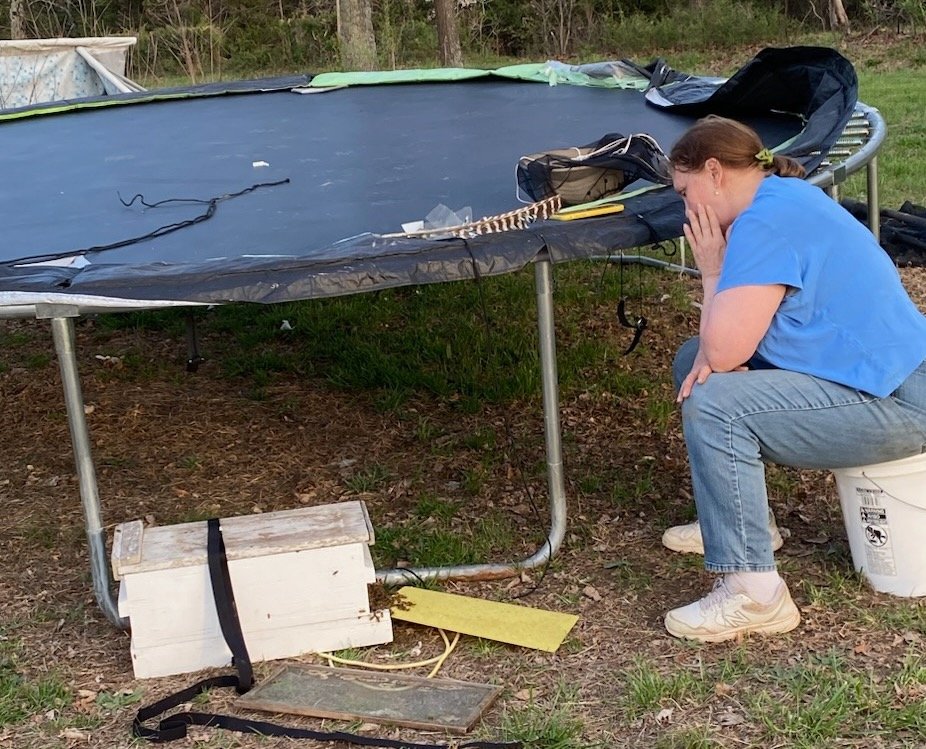Queen Bee Marking Pens
/Organizing queen bee marking pens in a gardening apron. (Photo by Charlotte Ekker Wiggins)
Queen Bee Color Pens
There are few things most beekeepers like more than finding new ways to do something. I certainly fall in that category so it was with great interest that I spotted this gardening apron turned into a queen bee color marking guide.
Queen bees are marked with a special color to indicate the age of the queen. There is an international queen bee marking code based on 5 colors and the last number of the year:
White: year ending in 1 or 6
Yellow: year ending in 2 or 7
Blue: year ending in 5 or 0
Green: year ending in 4 or 9
Red: year ending in 3 or 8
This system helps the beekeeper know the queen’s age while making it easier to spot her in a crowd of moving bees.
Now if all of your queen bees are the same age, you only need one marking pen. They’re special pens, by the way, not a marker you buy at your local big box store. And if you have different-aged queen bees, then you need different colored pens.
This is where the gardening apron comes in. This particular beekeeper has set up a system on the gardening apron to keep track of his marking pens. Sounds simple enough but once you’re out in your apiary handling bees and need to grab a marking pen - this marked gardening apron will make the pens very convenient and easy to find.

